French start-up Exotrail develops electric propulsion solutions for small satellites. They offer their customers launch flexibility, as their can use any scheduled launch that can then be corrected to their orbital position at an affordable cost.
The team recently announced that Exotrail had raised 3.5M€ of investment to develop the proprietary electric thruster technology for small satellites and software for the operation of satellites equipped with propulsion.
We spoke with the company’s co-founder and CEO David Henri to discuss Exotrail’s technology and the European start-up ecosystem.
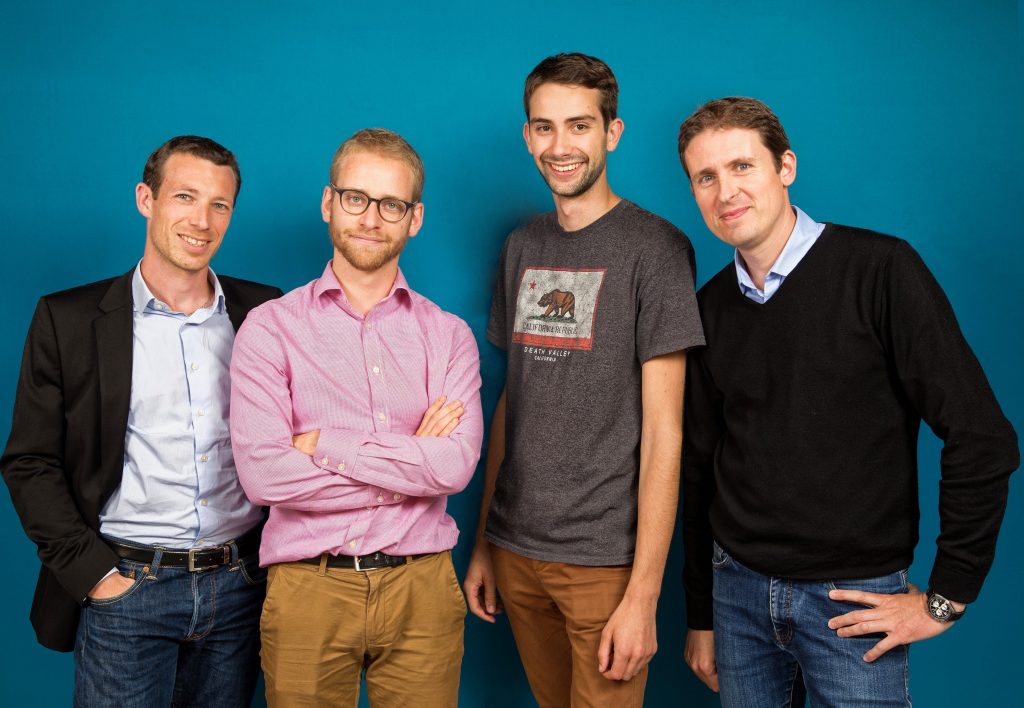
Spaceoneers: How did you come up with the idea for your business?
David Henri: I created Exotrail with another student (Paul Lascombes, now cofounder and Chief Scientific Director) while at school. I was studying mechanical engineering, corporate strategy and entrepreneurship in Ecole polytechnique in France so I was observing how “New Space” was evolving. This was a market where the barriers to entry were crashing down. At the time, my friend was working with a researcher who had designed a technology of a miniaturised thruster. That’s how we had both a market where barriers to entry were falling apart and an interesting technology. We knew at that time that there was a real need for propulsion. There was miniaturisation of many communications components, but propulsion systems were not following this trend. We had a combination of technology and the market. But se were studying entrepreneurship and lacked someone else who had an experience in the space industry. We brought on our now technical director (Jean-Luc Maria, now cofounder & CTO), who met with the researcher as well. This is how we created the team three years ago – the three of us. Nicolas then joined us as the fourth cofounder & Chief Operating Officer.
Spaceoneers: Can you explain your electric propulsion solutions technology?
David Henri: Our primary mission is to deliver agility to the space industry at an affordable cost. The first way we do this is by designing and selling the smallest Hall Effect thrusters in the world. These thrusters called ExoMG® are fully integrated electric propulsion systems that supports satellites from about ten kilograms (6U cubesat) to a few hundreds.
With electric propulsion, you can basically divide your launch orbits and your operational orbit – and optimise both. In today’s market, there are minimal options with ride-share launches, as there is low flexibility in terms of orbit and timing. There has been an emergence with many developments of dedicated launchers, but these are very expensive; and they are “dedicated” up to a certain point. And today they are far from being mature. We want to give flexibility to small satellites constellations by lowering launch costs and maximising constellation performances – with electric propulsion, constellations will have the capability to do multi-plane phasing or orbit raising manoeuvres. They will also be able to maintain very low altitude: by operating in these altitudes, imagery will have higher resolution and the downlink capability will increase.
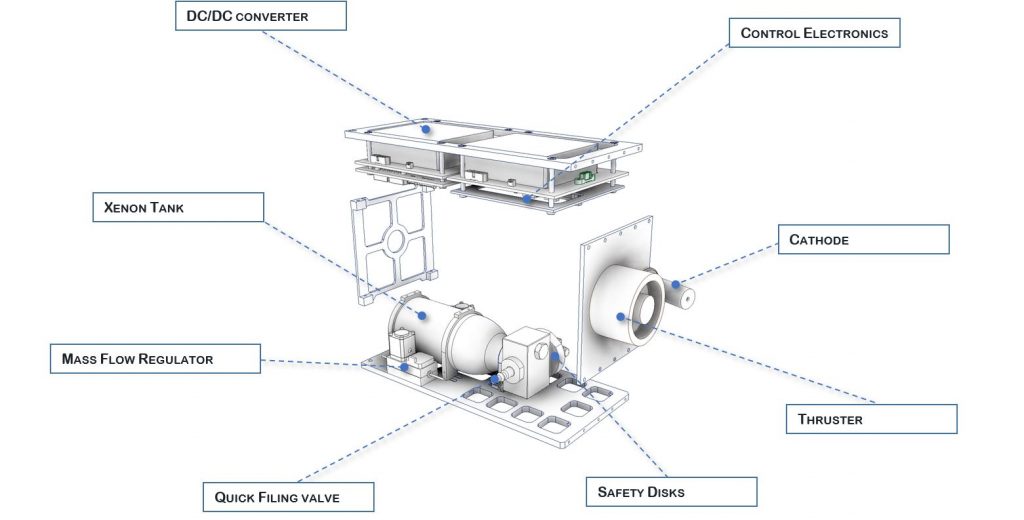
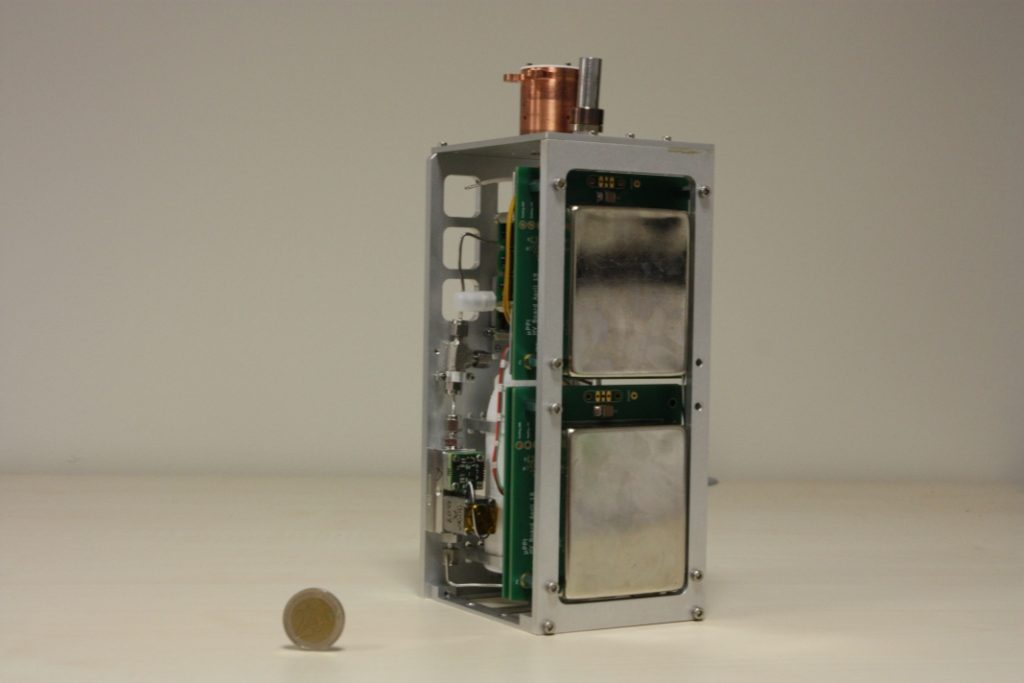
But we think about propulsion as a whole. Incorporating propulsion brings a lot of new questions and challenges: what will my mission look like? What are my new capabilities? How do I optimise the use of propulsion depending on my system capabilities? Customers in the end don’t care about buying the specific technology, but instead they are concerned with the picture resolution, lifespan extension, additional coverage, agility, reliability, etc. Because of this, we are not only designing electric thrusters but also software solutions to design, optimise and operate propulsion missions. We are thinking at the mission-system level, not at the sub-system level.
Our long-term vision is also different. Propulsion is just a first step to capture value and become a large company in the next decade. As a company, our vision is a much more ambitious than this. We believe that we can become a market leader because our value proposition is for some missions the most compelling. But propulsion is a means to do more. Then, we want to move from a company that only sells a system to a company able to provide services. Our vision is to use small satellites equipped with propulsion technologies and autonomous proximity operation technologies to sell on-orbit technologies and services (such as inspection, delivery and assembly). Our mission statement is to deliver agility – the first way we do this is with electric propulsion, but it is not the only way.
Spaceoneers: How do differ from existing companies in this area?
David Henri: Our main advantage is that we have a higher thrust than competitors. Electric propulsion has two drawbacks: you need a lot of power to generate thrust, and this thrust is usually low. And a low thrust means long manoeuvres. We tackle both of these problems: we consume less electrical power than other technologies and we have a higher thrust. The thrust-to-power ratio is typically 3 to 6 times higher than competing technologies. This allows our customers to access their operational orbit quicker thereby generating revenues earlier.
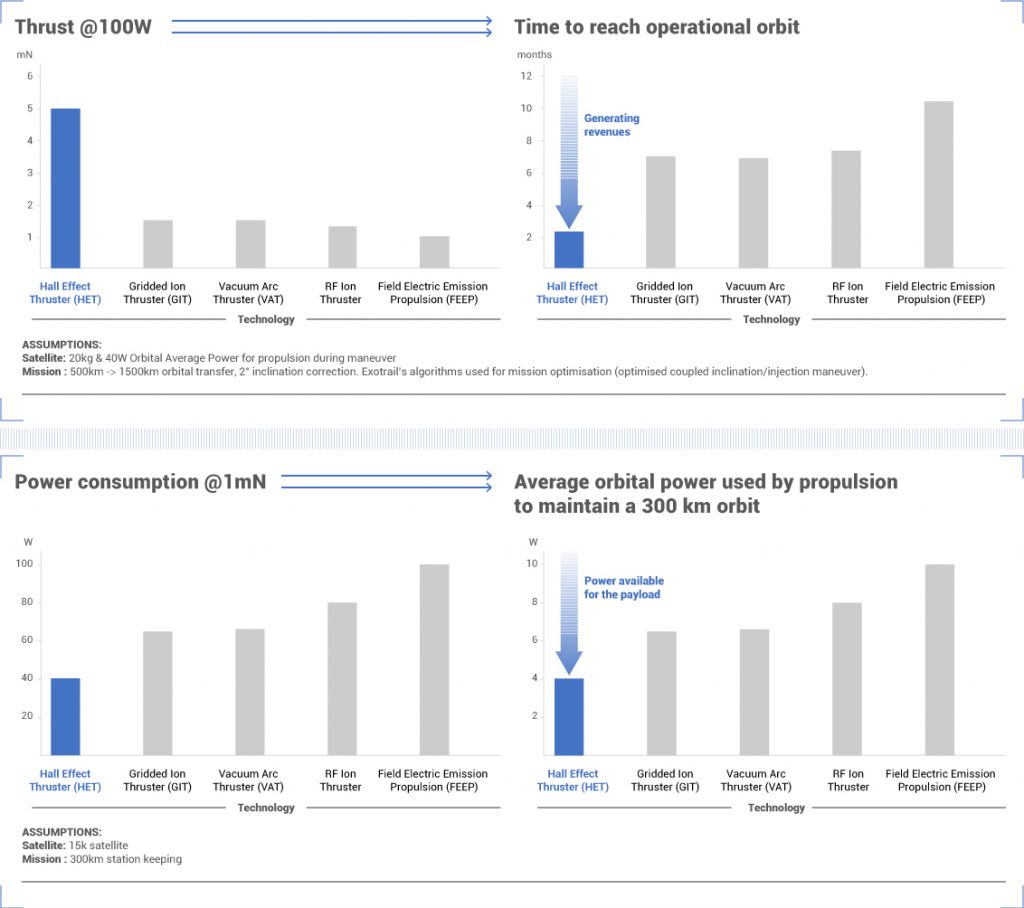
I think we also have a much different way of looking at the market. I see my company as selling agility, not systems. This is why we are believing very much in our software development and we think this will be key in the future. We will be able to help with the operation of any kind of satellite equipped with propulsion whether it is our technology or not.
Spaceoneers: So, you’re providing software as well as hardware?
David Henri: Yes. We are designing ExoOps® – Mission Design and ExoOps® – Mission Operation to design, optimise and operate propulsion missions. The first version of ExoOps® – Mission Design will be available before the middle of 2019. We will be able to provide solutions for propulsion operation for any kind of satellites equipped with any kind of propulsion to meet our customer needs.
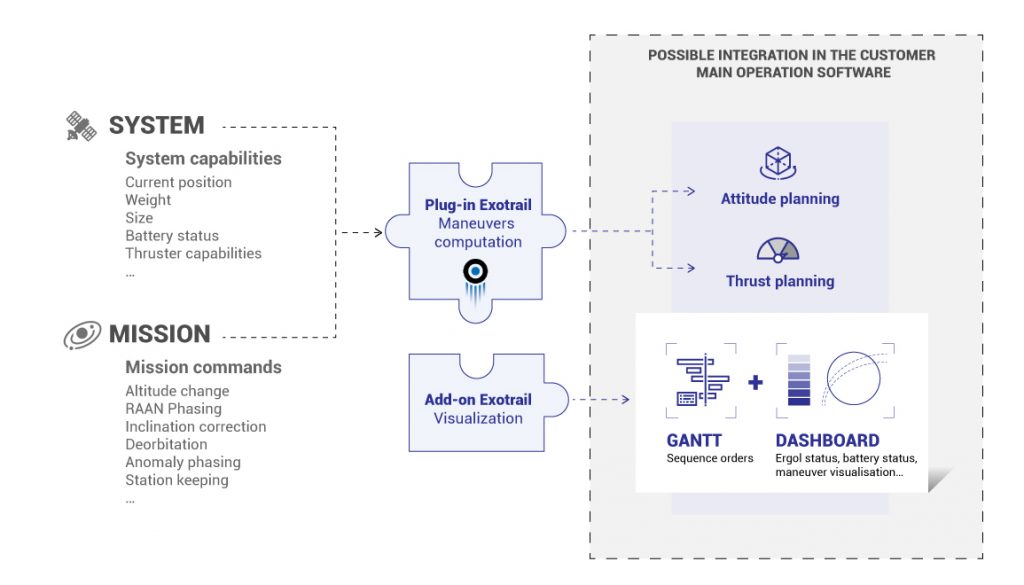
Spaceoneers: How were you involved with CNRS?
David Henri: We were working with Le Centre National de la Recherche Scientifique (CNRS), which is where much knowledge and know-how has come from. The technology initially comes from there. We also received funding of about 0.5M€ from SATT Paris-Saclay to move from proof of concept to a fully integrated prototype and the CNRS was a partner in this funding.
Spaceoneers: I understand you’ve also been fundraising?
David Henri: We have indeed. We have raised 3.5M€ this summer. Since 2016 we actually raised 4.7M€ (5.4M$) of funding from various sources – mostly venture capital. This is important because this is the largest fundraising to date from a European small satellite propulsion company. This gives us the financial stability to hire a team of experienced engineers, buy test and qualification equipment and move forward to reach our ambitious goals.
Spaceoneers: How do you find the current climate in France or Europe in terms of venture capital (VC)?
David Henri: I would say the climate is evolving. 1 year ago, when we started to approach some funds, I would have said that VCs are focused mostly on software and Internet companies. When we started to raise money, everyone told us “if you want to raise a seed round in France, you need to raise around 1M€, do software only, and it will take you 9 months”. We raised 3.5M€ in 6 months with a business model involving mostly hardware (in the medium term at least). So I would say that as long as you come with a compelling business model and a promising technology, the climate in France to raise money is good. Plus if you raise 1€ through venture capital, there is a high chance of you getting 1€ through public grants from regions and Bpifrance, the French National Investment Bank. This access to non-dilutive money is extremely precious and quite unique to France.
We were approached by non-French European funds as well, but we focused on the French VC market so I wouldn’t say too much about the climate in Europe. But I would say the main problem, in France and in Europe, is the capability to invest very large amount of money in Series C – D or more. I am talking about rounds of several dozens or hundred of millions of euros.
Spaceoneers: How do you think this can be solved in Europe?
David Henri: The French president and minister of economy recently announced a large deep tech fund. This is a move in the right direction. Investing in companies having long term visions is very important. This is what the United States is really good at and this is where I think Europe should go. If there is support at the political and national levels, this is a good first step. Also you need successful exists. You don’t have any VC business case without the right M&A ecosystem, so big corporations (such as Airbus and Thales) actively buying start-up space companies can also spark VC interest.
Spaceoneers: Can you tell us a bit more about the French commercial space start-up scene? Is there a strong attitude towards entrepreneurship?
David Henri: It’s quite complex. We have the largest space companies with Thales and Airbus, but we don’t have many newspace start-ups compared to Italy, Germany, etc. However, I do think this is changing. We are talking to these big players so hopefully the important conversations are starting. A lot of companies have emerged in the past year in French “New Space”.
There are two steps when an industry starts to look at being innovative. Firstly, that you say you are innovative, and you advertise yourself as looking for the right companies and subjects. Secondly, you actually do it. I think we are starting the second phase in France. The first step is not enough, and based on what we’ve seen, there is still an interest in newspace, there is money going in, but there is also a philosophy and an attitude to adopt. We are at the beginning of this process.
Spaceoneers: Do you find the market is trending towards smaller satellites?
David Henri: Yes, but I think we are at the end of this phase of newspace where a lot is accomplished with cubesats. That was the first step with Planet and Spire, but now we think (as do others) that the switch is towards a balance from the low cost of newspace and what you can do with larger spacecrafts. We think that in the next 2-4 years, this is where the market is going. With slightly larger satellites, you can benefit from larger capabilities for communications and observations. Therefore, we think the market is trending towards satellites between 10 and 100 kilograms and there is a second segment which supports satellites up to 200kg. Our product is focussed for the smaller range of 10-100 kilograms at first, so we need to find a good fit with what we are doing and where the market is going.
Spaceoneers: How do you think these trends are going to impact your value proposition in the near future?
David Henri: The evolution of small satellites getting slightly bigger and requiring more flexibility and capabilities are favourable for us because we can deliver more value to our customers. This value proposition is good for us. The customers need us to provide a cost-effective system, so we think most satellites and constellations operators will require propulsion because they demand sufficient agility for phasing and everything that is launched higher than 600km needs a de-orbit solution. We think that propulsion technologies will give a competitive edge to those using it, so this is encouraging for us.
Spaceoneers: What would you say are the biggest challenges you’ve faced thus far?
David Henri: We managed to recruit 8 people in one month. This was definitely a challenge since we were only 6 before that. Finding very good people is always very, very challenging but I am extremely happy with the people we found. Not only they are very good and hard-working but they share our values and they have very complementary expertise. I would say now that our main challenges to come our technical and commercial : we need to finish our technical development and send our first demonstrator to space – all of this within a very competitive environment.
Spaceoneers: Many of the start-ups we’ve spoken to agree that getting investors to understand space is a big aspect. The space industry is evolving rapidly, so getting investors to both follow and understand that is a challenge. What mechanisms do you think could be implemented to better inform investors?
David Henri: We need to be patient. It comes down to how you can convince VC to invest in space. Space by definition is global. VC’s are after that scalability, so this potential should raise the VC interest. They should recognise all the companies that are emerging have the potential to be global leaders, since the market itself is inherently global. It’s important they both understand and value this fact.
VC’s also need success stories. When companies (like Clyde Space, bought by AAC for 32M£ in 2017) are bought for a significant funds, this can also be considered as an encouraging sign. The market is happening now and the first VC to enter will win. These things should be emphasised.
Spaceoneers: What type of activities or mechanisms could encourage this?
David Henri: I think events and conferences could be helpful to share these messages. Adding space into non-space conferences could assist too, not just for space people but for people to integrate space (like artificial intelligence, robotics and logistics). To do this, investors will see the value and catch their interest.
Spaceoneers: What advice would you give to others who are considering starting or have just began a start-up in the space industry?
David Henri: Be prepared to be patient. Gather people around you, including advisors that are not necessarily entirely in the space industry, but can bring knowledge from other relevant sectors. We collected many advisors and spoke with lots of companies (for example, imagery companies). The earlier the advice comes, the easier it is to implement it.
Don’t be afraid to admit that you are wrong or to ditch or change a concept. We studied a lot of business cases that unfortunately couldn’t work. This is okay because this is how we learned much of what we needed.
Think long-term. We think about the business, and we think of what value can we deliver. If the first step works and we are able to become a global leader in the propulsion market, then why stop there? Do more and capture more value. You company has to create a means to something
